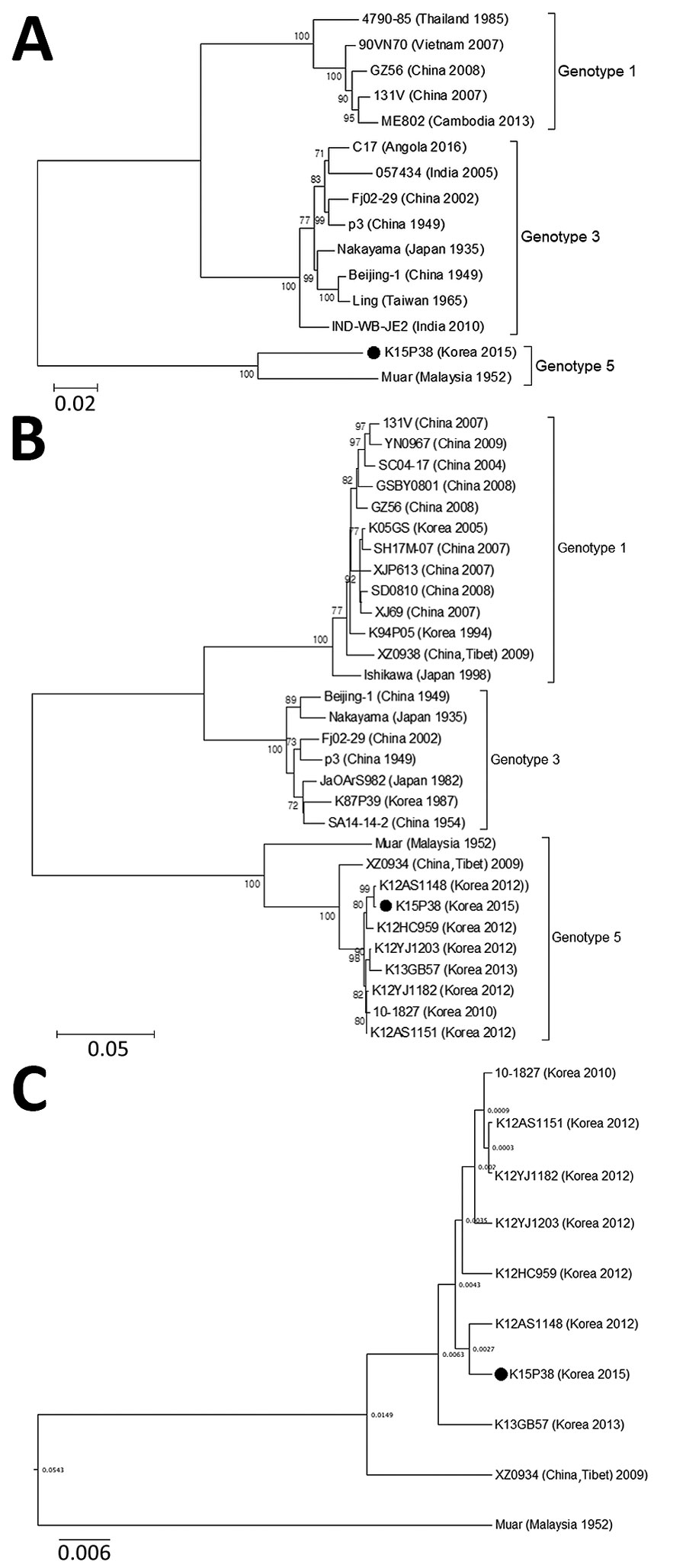Volume 26, Number 5—May 2020
Dispatch
Genetic Characterization of Japanese Encephalitis Virus Genotype 5 Isolated from Patient, South Korea, 2015
Figure 2

Figure 2. Phylogenetic trees of Japanese encephalitis virus (JEV) genotypes 1, 3, and 5, South Korea. A) Entire open reading frame of JEV human isolates. B) Envelope protein genes of JEV human isolates. C) Divergence time estimation based on the envelope protein genes of JEV genotype 5. Bootstrap probabilities (values along branches) of each node were calculated by using 1,000 replicates. Branches showing quartet puzzling reliability >70% can be considered well supported. Black circles indicate K15P38 strain from patient samples. Scale bars indicate nucleotide substitutions per site.
1These authors contributed equally to this article.
Page created: April 16, 2020
Page updated: April 16, 2020
Page reviewed: April 16, 2020
The conclusions, findings, and opinions expressed by authors contributing to this journal do not necessarily reflect the official position of the U.S. Department of Health and Human Services, the Public Health Service, the Centers for Disease Control and Prevention, or the authors' affiliated institutions. Use of trade names is for identification only and does not imply endorsement by any of the groups named above.